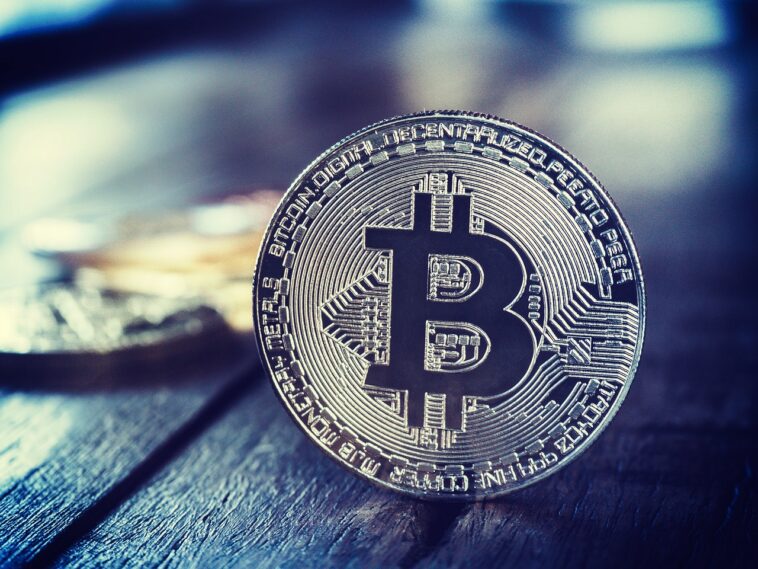
Contents
You Can Find It In This Article
The BRICS countries are increasingly turning to digital currencies and blockchain technology to reshape international monetary systems. XRP is a cryptocurrency created by Ripple that stands in the front of this revolution. analysts believe it’s low transaction costs and quick processing time make it a perfect candidate for this payment system.
Crypto Sensei is a well known analyst who predicted that XRP would skyrocket up to $10,000 if BRICS countries adopted it widely. Ripple’s strong partnerships and the growing role it plays in global payments are at the core of this prediction. As nations look for alternatives to the US Dollar, XRP has a great chance to be a major player in the international financial world.
According to recent reports, BRICS nations are actively working on a system of payment based on blockchain technology and digital currencies. The goal of this development is to decrease their dependence on the US Dollar. The cryptocurrency market closely monitors these developments due to XRP’s increasing popularity and possible integration into this new framework. Visit CoinDesk for more information on the BRICS digital currency.
Overview of XRP
The XRP digital currency is known for being a fast and cheap way to make transactions. It is used widely for international payments due to its high efficiency.
XRP Functionality and Technology
XRP was designed to enable real-time cross-border payment. The transactions can be completed in a matter of seconds, which is much quicker than the traditional banking system. XRP has lower fees and is more affordable than other crypto currencies like Bitcoin or Ethereum.
XRP’s consensus algorithm is a key feature. It does not rely upon proof-of work or proof-of stake mechanisms. It uses an unique consensus protocol instead to validate the transactions. It is more eco-friendly because it increases efficiency and reduces energy usage.
Infrastructure for XRP Ledgers (XRPL).
The XRP Ledger is the technology decentralized behind XRP. The XRP Ledger (XRPL) is the decentralized blockchain technology behind xrp. A network of independent validators maintains the ledger, which guarantees its security and robustness.
XRPL is capable of supporting a variety of functionalities including token issuance and decentralized exchanges. The ledger is highly scalable, capable of processing 1,500 transactions every second. This makes it ideal for enterprise applications. The ledger also provides developers with tools that encourage innovation in the ecosystem.
BRICS Nations’ Involvement in Cryptocurrencies
The BRICS nations are exploring digital currency and blockchain technology more. This is evident in the various initiatives, regulatory strategies, and implementations of each nation.
Brazil’s Crypto Initiatives
Brazil has embraced cryptocurrency with enthusiasm. Brazil has experienced a significant increase in the use of blockchain and crypto technology. Brazil’s central banking is creating a digital money called Real Digital. Diverse financial institutions collaborate to test the use of digital currencies.
Brazil’s major banks are developing blockchain-based projects that will enhance the security and efficiency of financial transactions. The authorities are focused on regulating the market to ensure investors’ safety and protect them.
Russia’s Blockchain Initiatives
Russia’s blockchain initiatives are progressing despite sanctions and economic difficulties. Recent plans by President Putin to create an independent payment system using blockchain and digital currencies for the BRICS were confirmed. Russia’s central banks is also investigating the Digital Ruble.
Blockchain is seen as an instrument to help bypass sanctions and secure transactions. The Russian government is working with the other BRICS countries to improve technological innovation.
India’s Regulatory Approach towards Crypto
India is cautious, but also progressive in its approach to crypto. It has recently been developing a framework to regulate digital assets. Digital Rupee is the name of the central bank’s digital currency. The move is intended to ensure economic stability while aligning with global financial trends. Indian authorities work with their international counterparts on best practices for cryptoregulation. Reserve Bank of India is the leader in integrating blockchain technology to the financial sector.
China’s Digital Currency Initiatives
China’s Digital Yuan has made significant progress. China is a pioneer in the use of digital currencies centralized. The Digital Yuan is being tested in different cities. There’s also a strong government support for the blockchain technology. China wants to decrease its dependence on the US Dollar and increase global financial influence. The authorities are investing as well in research and development of blockchain. The People’s Bank of China spearheads the digital currency to transform the financial landscape of the country.
South Africa’s Crypto Environment
South Africa explores the potential for cryptocurrencies and Blockchain technology. South Africa is exploring the possibility of issuing its own digital currency, called Digital Rand. The South African Reserve Bank studies the economic impact of digital currencies. The country aims to establish a regulatory environment that encourages innovation and protects investors. South Africa’s Financial Institutions are participating in Blockchain projects, which streamline processes and increase security.
Possible Partnership Implications
XRP-BRICS partnership could lead to a revolution in cross-border payment and financial inclusion. BRICS countries could overcome financial obstacles by leveraging XRP.
Cross-Border Settlements and Payments
Using XRP would improve the efficiency of cross-border payments within BRICS. International transactions could be more efficiently and quickly completed using traditional banking systems. XRP’s ledger allows for near-instantaneous settlements at low costs, which makes it appealing to economies such as Brazil, Russia India China and South Africa.
Crypto analyst Robert Doyle, (Crypto Sensei), suggests that XRP’s value could be $10,000 due to the partnerships. The claim highlights the technology’s ability to cut transaction time from days down to seconds. The convergence of BRICS and XRP could also reduce dependence on the U.S. Dollar, hinting towards more autonomy for global financial systems.
Financial Inclusion Strategies
An XRP-based partnership could be used to promote financial inclusion among BRICS countries. These countries have many people who need to access essential banking services. XRP transactions are low cost, which could provide affordable financial services for unbanked people and bridge significant economic gaps.
Blockchain is a key technology in the BRICS initiative to create digital currencies. The technology could make financial transactions more secure and transparent. Robert Doyle, a crypto sensei, sees these efforts as an important step in achieving economic stability for regions that were previously ignored by the traditional banking sector. XRP adoption could democratize access to financial services, thereby changing the game for BRICS countries.
The Impact of Traditional Banking
Financial institutions will have a chance to benefit from the adoption of XRP in BRICS countries. Here are some key points.
Mainstream Finance: Challenges and Opportunities
Adoption of XRP may disrupt current financial systems. International transactions are often slow and expensive for traditional banks. XRP technology enables quicker, more cost-effective payment methods, which makes the traditional ways of doing things seem obsolete.
Crypto analysts think that integrating XRP can reduce fees, and speed up settlements. The traditional banking industry would be less competitive. In addition, the introduction of blockchain-based payments systems may present additional security challenges as it would require resources and experts to fix vulnerabilities.
It is likely that traditional banks will need assistance in adapting legacy systems to new digital currency. This transition may be further complicated by regulations and compliance standards. Crypto Twitter experts emphasize the fact that traditional finance is moving at a slow pace, which could prevent the blockchain technology from being adopted.
Financial Institutions Adopting Blockchain Technology
Despite challenges, many institutions see the adoption of XRP as positive. XRP’s and Ripple’s technology can help banks and their customers to make transactions faster and more affordable. Analysts say partnerships have begun with financial institutions and central banks.
Some members of BRICS like India and China are working to integrate blockchain technology into their payment system, which may pave the road for a wider adoption. Crypto media analysts shared their insights on how such collaborations can enhance global remittances, making them efficient.
The capability for cross-border transaction to be streamlined is an important advantage. Financial institutions that adopt XRP can lower the costs associated with international payments. It could also encourage banks to try XRP and integrate it into their systems.
Geopolitical Perspectives
The alliance between BRICS and XRP focuses primarily on geopolitical issues. The BRICS nations are tackling monetary policies and technology’s influence on international diplomacy.
Monetary Policy and Sovereignty
The BRICS (Brazil Russia India China South Africa) group aims to increase its monetary autonomy. Introduce a digital currency-based payment system to reduce the group’s dependence on US dollars. The move is in line with its aim of boosting national economies, and gaining more control over the monetary policies.
China has made it clear that they no longer support the US dominance in monetary institutions. Ripple, XRP and the International Monetary Fund have also been of interest to IMF. The shift is now more legitimate and the BRICS are able to move forward with a financial system that better aligns their interests.
Technological Diplomatic Influence
The collaboration planned between BRICS countries and blockchain technology aims to reshape global finance. The BRICS Group’s dedication to innovative solutions in finance is demonstrated by the implementation of these technologies. These nations can also exert their diplomatic influence by using technology.
Ripple’s XRP could see a significant increase in its value. Crypto Sensei Robert Doyle believes XRP adoption by BRICS will drive the Where To Buy of XRP to new heights. Crypto Twitter is awash with market observers discussing XRP’s increasing relevance, as BRICS move away from USD. It could create a financial system where technology is a key factor in economic and diplomatic strategies.
XRP is a BRICS Reserve currency
Consideration of XRP for BRICS as a currency reserve involves evaluating the viability and global impact. It could be a significant departure from the traditional financial system and change international trade dynamics.
The Viability of the System and its Scalability
The proposed use by BRICS of XRP (Brazil Russia India China and South Africa), raises concerns about the viability and scalability.
Scalability The XRP Ledger is built to efficiently handle large transaction volumes. The XRP Ledger (XRPL) can handle 1,500 transactions per minute, which makes it the fastest blockchain network.
Stability A second concern is the stability. Digital currencies such as XRP, unlike fiat currency can be very volatile.
Scalability remains a concern despite these advantages. To adopt XRP as a currency of reserve, the BRICS will need to ensure that the system is able to handle their combined transaction volumes.
The Global Impact of Multinational Reserve Currency
The adoption of XRP by BRICS would have a significant global impact, and challenge the dominance of US dollars in international trade. The transition to digital reserves could have several benefits.
Less Dependency: This can reduce the reliance on US financial systems, allowing BRICS countries to exercise more control.
Efficient: Using Blockchain can improve transaction efficiency and speed, as well as reduce costs related to cross-border trading.
Robert Doyle (Crypto Sensei), a crypto analyst, has stated that XRP’s value could increase significantly if this adoption occurs. The shift in the global economy could be influenced by this.
Consider carefully how adopting XRP will affect your domestic economy and relationships with other nations.
Legal and Regulatory perspectives
XRP’s regulatory framework involves international collaboration and stringent measures to protect against cyber threats and fraud.
International Regulatory Collaboration
XRP is used in many different countries with their own regulations. These regulatory authorities often work together to develop a unified digital currency environment.
Ripple engages actively with regulators and financial institutions around the world. By aligning themselves with international standards, they aim to create a stable and reliable regulatory framework for XRP. The BRICS announced recently plans to create a blockchain-based payment system that uses digital currencies. This shows increased cooperation in the regulatory field.
Experts on crypto Twitter emphasize the importance of collaborations to standardize regulation and reduce uncertainty for investors. Analyst @CryptoExpert tweets, “Unified regulatory structures are critical for XRP adoption.” This sentiment has been echoed in part by several enthusiasts of the market who are convinced that more predictable regulations can be beneficial.
Cybersecurity Fraud and Prevention
Assuring security for XRP is a priority. Ripple implemented strong measures to protect against fraud and cyber-threats.
The recent court decisions in the SEC Labs v. Ripple case highlight the importance of complying with security regulations. Ripple was praised for its efforts in maintaining secure platforms, but the court also highlighted some areas that needed improvement.
On social media, industry leaders are often discussing the importance of good cybersecurity. As an example, the @CryptoGuru tweeted, “Effective cybersecurity measures aren’t just about compliance with regulations, but also about building user trust.” The tweet aligns to the industry-wide focus on security in order to ensure safe usage of digital assets.
Future Outlook
XRP’s future in relation to BRICS countries is full of potential, thanks to the interest shown by these nations for digital payment systems. The key focus areas are predicted crypto trends and long-term perspectives for XRP, BRICS and collaboration.
Crypto Trends for 2018
The BRICS countries are actively seeking to develop payment systems as digital currency becomes more widely accepted. They are also exploring the possibility of integrating XRP technology with blockchain. XRP could be a great asset to BRICS in their quest for an independent payment system, given its fast transaction speeds and low cost.
These nations are hoping to lessen their reliance on volatile U.S. dollars by leveraging the blockchain. The move may lead to more stability in the financial climate for developing nations. A shift to tokenized markets, and the increased use of digital currency like XRP, is also predicted.
Long-term prospects for XRP & BRICS
Robert Doyle (also known as Crypto Sensei), an analyst who is well-known in the BRICS, believes that XRP’s value could reach $10,000 if it were widely adopted by these nations. The optimism stems from XRP’s potential to provide benefits like reduced transaction costs, increased efficiency and more.
Adopting XRP would pave the path for a significant transformation of international payments. By substituting the U.S. Dollar with XRP, these nations can also create a stabler financial system. Using XRP to stabilize economies in developing countries within BRICS and lower currency risks could be a good move.



















Comments
Loading…